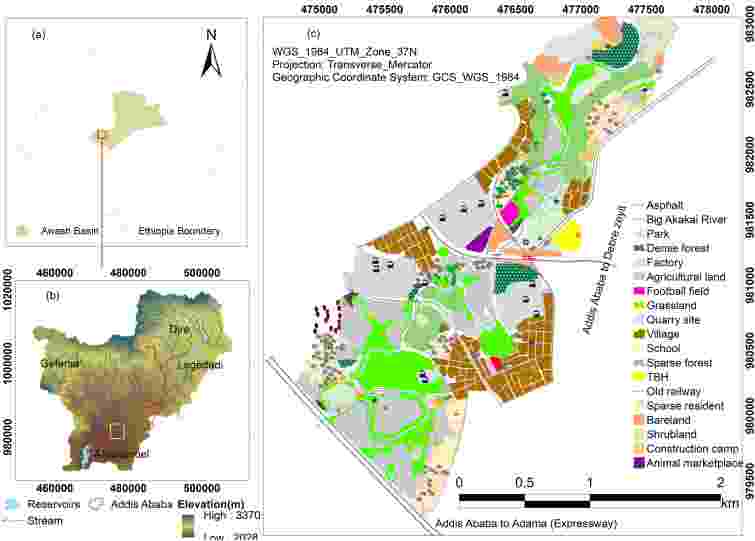Evaluating a new method of remote sensing for flood mapping in the urban and peri-urban areas
Applied to Addis Ababa and the Akaki catchment in Ethiopia
19 March 2022


Location map of the study area
Authors: Tilaye Worku Bekele, Alemseged Tamiru Haile, Mark Trigg, and Claire Walsh
The Sentinel-1 SAR dataset provides the opportunity to monitor floods at unprecedentedly high spatial and temporal resolutions. However, the accuracy of the flood maps can be affected by the image polarization, the flood detection method used, and the reference data. This research compared change detection and histogram thresholding methods using co-polarization (VV) and cross-polarization (VH) images for flood mapping in the Akaki catchment, Ethiopia, where Addis Ababa city is located. Reference data for the accuracy assessment were collected on the satellite overpass date. A new method, Root of Normalized Image Difference (RNID), has been developed for change detection. Multi-temporal flood maps using the best performing method and image polarization were generated from April to November of 2017–2020. Better accuracy was observed when using the RNID method on the VH polarization image with an overall accuracy of 95% and a kappa coefficient of 0.86. Results showed that flooding in the Akaki commonly begins in May and recedes in November, but flooding was most frequent and widespread from June to September. Irrigated land and built-up area accounted for 1057 ha and 544 ha of the inundated area, respectively. Several major roads in the study area were also affected by the floods during this period. Our findings indicate that the S-1 images were very useful for flood inundation mapping, the new change detection method (RNID) performed better in urban and peri-urban flood mapping, but the accuracy of the flood map significantly varied with the flood detection method and the image polarization.



